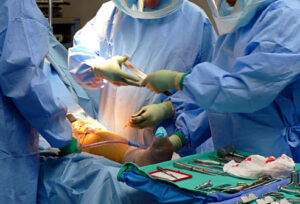Knee Replacements Surgeries
Find the Best Knee Replacement Surgeon in Pune for Expert Care
Knee replacement surgery is an orthopedic procedure that involves replacing a diseased part of the knee with a prosthetic joint made of metal or plastic. This procedure is suggested when attempt at treating pain or restoring function through non-invasive means fail and this is more often the case in patients with advanced arthritis. If you require professional assistance, for example a knee replacement surgeon in Pune , you will be taken through several treatment options.
Types of Knee Replacement Surgery
 The surgeon just moves the knee cap aside to reveal the joint in Sub Vastus and Minimally Invasive Knee Replacement. The tissues in front of the thigh extensors are strengthened as a result of this. The stretch damage to the surrounding joints is also reduced since the bones are not separated.
The surgeon just moves the knee cap aside to reveal the joint in Sub Vastus and Minimally Invasive Knee Replacement. The tissues in front of the thigh extensors are strengthened as a result of this. The stretch damage to the surrounding joints is also reduced since the bones are not separated.Conditions treated
Knee replacement surgery can also help with the following issues:
Osteoarthritis is a disorder in which the cartilage between the knee and the bone joints wears away.
Rheumatoid Arthritis is a disorder in which the immune system assaults and damages the knee lining.
Pros
- Enhanced mobility
- Pain-free living
- A higher standard of living.
Cons
- Infections or clots in the blood
- The prosthetic knee won’t perform as well as a normal knee.
- After some time, the replacement joint may become loose or wear out.

